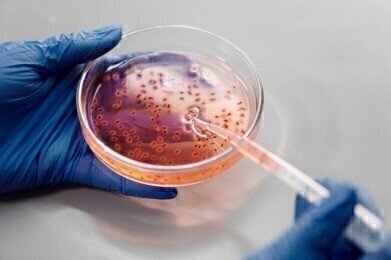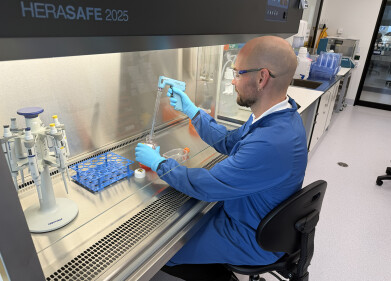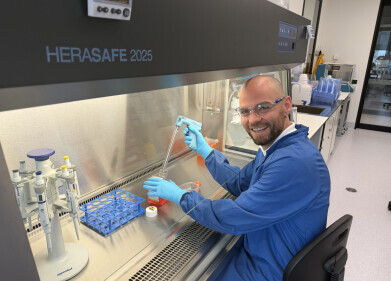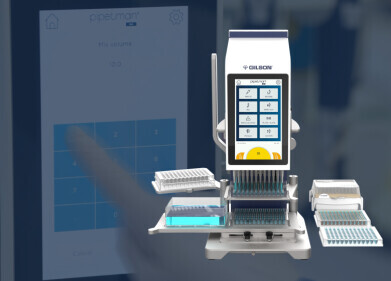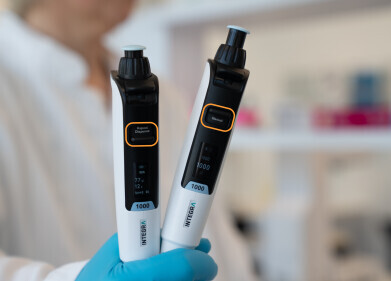Liquid handling
Liquid Handling - What, Why & How?
Jan 07 2022
From detecting pathogens in human blood and screening produce for food-borne viruses to analysing petroleum samples and highly flammable chemicals, liquid handling processes are used across a wide range of laboratories. Scientists rely on both manual and automated equipment to safely handle liquids and transfer them from one location to another.
While the process seems relatively simple, liquid handling can be complex. Most laboratories have strict procedures and protocols in place to protect personnel and the integrity of samples and results.
Want to know more? Read on for our complete guide to liquid handling in scientific laboratories, covering topics like advances in pipetting, high throughput liquid handling, robotic technologies and more.
The history of pipettes
Handheld pipettes, small instruments used to measure and transport liquids, have been used in laboratories since the 1940s. French chemist and microbiologist Louis Pasteur invented the tool, which was originally made from glass. The instruments not only allowed scientists to improve the accuracy of measurements but minimise sample contamination and reduce personal exposure to harmful substances. Manufacturers were quick to switch to plastic, a cheaper and more durable option, within a matter of decades.
In the 1950s, German physician Heinrich Schnitger introduced laboratories to the micropipette. The instrument revolutionised the liquid handling process with a spring-loaded piston and removable plastic tip. The 1960s saw German life sciences company Eppendorf secure a patent for the product and begin commercial production, a move that made micropipettes a mainstay in laboratories of all sizes. This breakthrough led to the development of the adjustable micropipette in the 1970s.
Today, scientists utilise advanced pipettes equipped with electronic sensors, multiple heads, Bluetooth connectivity, integrated data analysis software and other features. This has slashed pipetting steps by an impressive 98% and set new standards for laboratory efficiency. Advances in technology have also made pipettes more affordable and readily available to not just state-of-the-art institutions, but also school, university and privately owned labs.
What are the different pipetting techniques?
Scientists rely on a variety of different pipetting techniques to measure and transport liquids in the laboratory. Below, we spotlight some of the most widely used methods in more detail.
- Air displacement micropipettes
Air displacement is one of the most common techniques used to aspirate and dispense liquid in laboratories. The technique relies on micropipettes featuring air cushions in the tip to create a vacuum and pull liquid into the chamber. Technicians can adjust air cushion volume settings to achieve granular accuracy.
- Positive displacement pipette
These user-friendly pipettes use piston-driven displacement technology to extract and dispense liquid. The internal piston is forced down the chamber, where it comes into direct contact with the liquid. Vacuum force then sucks liquid into the tip.
- Electronic pipettes
Electronic pipettes set a new benchmark for speed and efficiency, allowing laboratory personal to aspirate, transport and dispense liquids at the touch of a button. Most are powered by electronic motors, which offer smoother air displacement and minimise the risk of air bubble formation and chamber contamination.
- Multichannel pipettes
Used for repetitive tasks, multichannel pipettes usually offer between 8 to 12 tips. They’re a great way to speed up high-volume tasks and can aspirate and dispense multiple samples simultaneously.
The advent of high throughput liquid handling
From food and beverage sampling to genomics and drug discovery, many laboratories rely on high throughput liquid handling to generate results. Next-generation high throughput liquid handling equipment allows scientists to test and analyse a huge number of samples in a short period of time.
Automated liquid handling technologies have played a big role in boosting throughput and drastically increasing laboratory efficiency. As well as simple tasks, automated technology can also be used to complete complex processes. This includes plate replication, serial dilution and inter-plate sample transfers.
Other than heightened improving accuracy and precision, here’s a closer look at the benefits of automated liquid handling:
- Increased walk-away time
In addition to improving accuracy and precision, automated pipette and liquid handling systems optimise walk-away time for scientists and technicians. This allows them to focus on other important tasks that can’t be automated. For example, complex data analysis and interpretation.
- Minimising repetitive strain injuries
Another benefit offered by automated liquid handling technology is the elimination of repetitive strain injuries. Injuries acquired in the lab can not only compromise productivity but also result in workplace compensation claims and higher insurance costs.
What to expect from automated, high throughput liquid handling systems
- Colour coded status to indicate status, even from across the laboratory
- Enhanced safety features to protect laboratory personnel
- Spacious, user-friendly designs to allow access from multiple angles and positions
- Built-in cameras to monitor operations and review any issues or errors
- Advanced software compatible with both inhouse and third-party programs
The role of software
It’s not just the equipment itself that drives liquid handling processes. Software plays a key role in maintaining precision and accuracy, calibrating equipment and processing data. Most automated liquid handling machines feature built-in software to improve accuracy and reproducibility, as well as minimise the risk of variability between technicians. With reliable software, laboratory personnel enjoy the total peace of mind liquid samples are being processed carefully and consistently.
Liquid handling applications
As well as standard applications such as combining master mixes, primers and serial dilutions, liquid handling has become a backbone in drug development, PCR testing and food and beverage analysis laboratories.
Find out more about the different applications below:
- Drug development
Advances in liquid handling systems have been especially useful in the drug development sector, where many laboratories are transitioning away from manual methods and opting for automated, high throughput workstations that operate 24/7.
“Automation is critical to the modern drug discovery laboratory because it increases the speed and accuracy of tests, saves time, and allows the scientist to focus on science and not manual tasks,” maintains Kevin Hrusovsky, CEO of US-based company, Caliper Life Sciences. “The ability to do half a million test points in one day has opened up new strategies in exploring drugs.”
- Food and beverage analysis
From determining nutritional values to testing for toxins and contaminants, fluid handling is fundamental to food and beverage analysis. In Mexico, leading juice and beverage producer Jugos del Valle recently adopted electronic pipettes to speed up laboratory testing workflows. Other laboratories rely on liquid handling systems to detect food borne viruses.
- Sample preparation for mass spectrometry (MS)
Robotic liquid handling systems have revolutionised the way MS samples are prepared and allowed laboratories to work faster and smarter. A recent report published in the journal Analytical Sciences explored the benefits of robotic liquid handling systems and concluded they have the capacity to increase throughput by almost 100 samples.
“Our procedure features the automation of a “microdialysis” step, an efficient desalting approach prior to proteolytic digestion that optimises digestion completeness and consistency each time,” reads the report. “The workflow is completely hands-free and requires the analyst only to pre-normalise the sample concentrations and to load buffers and reagents at their designated positions on the robotic deck. The robotic liquid handler performs all the subsequent preparation steps and stores the digested samples on a chiller unit to await retrieval for further analysis.”
- Next-generation sequencing (NGS)
Sample preparation is one of the major challenges faced by next-generation sequencing laboratories. Automated liquid handling systems rise to the challenge and offer a fast, easy and cost effective way to prepare samples and maintain the high-throughput workflow needed to generate results.
Robotic liquid handling systems have proven particularly valuable in NGS laboratories, with the capacity to run independently without risking performance and accuracy.
“Automatic liquid-handling systems have the potential to significantly optimise genome sequencing outputs, both in time and costs. As the needs of biological laboratories become clearer, the properties of these pipetting robots also evolve,” reads a report published in the journal BMC Genomics.
- Polymerase Chain Reaction (PCR) tests
The value of automated and high throughput liquid handling workflows became especially apparent during the COVID-19 pandemic. A surge in demand for PCR testing forced lab directors to accelerate the development of new PCR liquid handling techniques, with input from both public and private institutions.
Industry-leading liquid handling solutions company Gilson stepped up with automated systems like the PIPETMAX®. Built to offer accurate and repeatable with minimal hands-on supervision, the high volume automated pipetting system emerged as an invaluable tool for PCR testing labs.
- Cell-based assays
Many specialist laboratories invest in liquid handling equipment designed exclusively for particular applications. For example, the Multidrop™ Combi dispenser by Thermo Fisher is purpose-built to dispense intact cells. Similarly, the range of epMotion instruments from Eppendorf feature built-in sterilisation technology that makes them ideal for cell-based analysis. The advanced liquid handling instruments offer innovative features such as an integrated HEPA filter module and UV lamp, which allow users to sterilise instrument in just seconds.
From liquid handling technologies to data analysis, artificial intelligence (AI) is transforming the way modern laboratories operate. Find out more about the revolution in ‘What is AI and how can it be applied to scientific instruments
Digital Edition
Lab Asia Dec 2025
December 2025
Chromatography Articles- Cutting-edge sample preparation tools help laboratories to stay ahead of the curveMass Spectrometry & Spectroscopy Articles- Unlocking the complexity of metabolomics: Pushi...
View all digital editions
Events
Jan 21 2026 Tokyo, Japan
Jan 28 2026 Tokyo, Japan
Jan 29 2026 New Delhi, India
Feb 07 2026 Boston, MA, USA
Asia Pharma Expo/Asia Lab Expo
Feb 12 2026 Dhaka, Bangladesh
